Working with living matter
a 2-week project in collaboration with Bastian Beyer and Daniel Suarez from the Matters of Activity cluster, Humboldt University, Berlin, developed in the framework of the 2022 « matérialités futures » course, 4DTM, Ecole des Arts Déco.
Biocalcified textile architecture is a practice-based and design-led research course sitting at the intersection of textile design, architecture and microbiology. It asks how textile designers can work with calcifying bacteria to design bio-based solidified textiles for architectural expressions. Calcifying bacteria are micro-organisms known for their ability to precipitate calcite and solidify sand given a calcium source and urea through the process of microbiologically-induced calcite precipitation or biological cementation. Also known as biocalcification, this process is used by engineers in the consolidation and repair of sand, brick and concrete structures while rare incursions in the design community relate essentially to sand or concrete-based architectural and urban design demonstrators. Here building on the pioneering Column project by Bastian Beyer and Daniel Suarez, we expand the vocabulary of what a textile-based biocalcified architecture can be with textile design crafts and sensitivity.
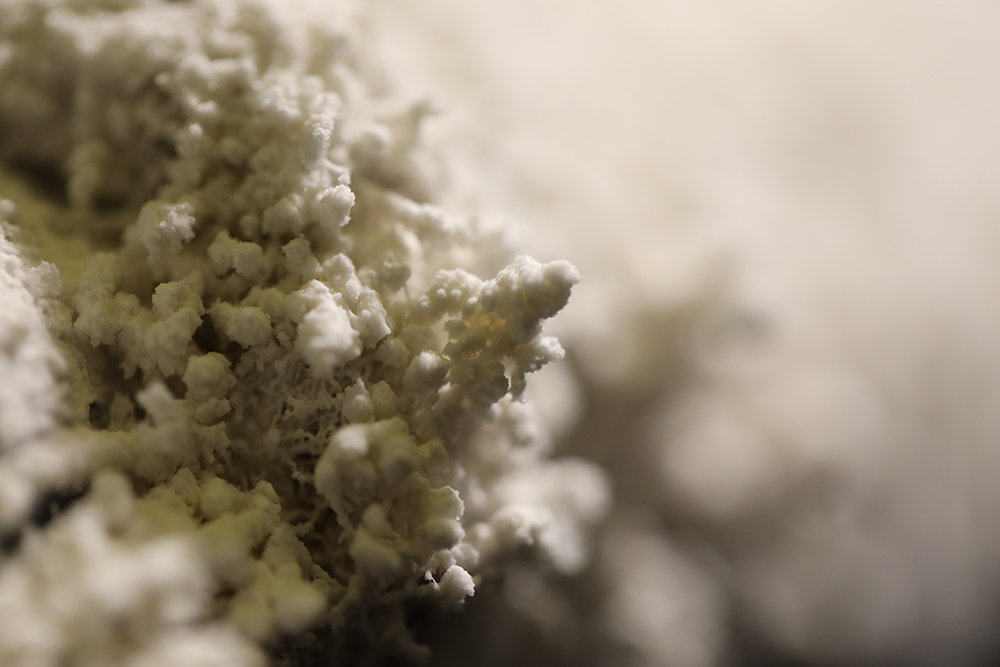
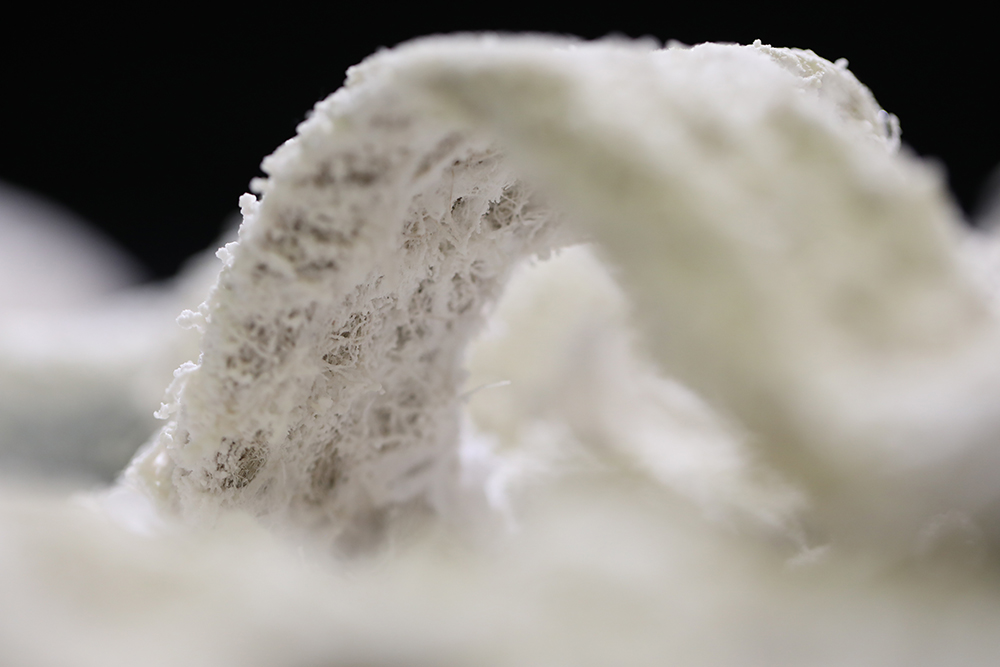
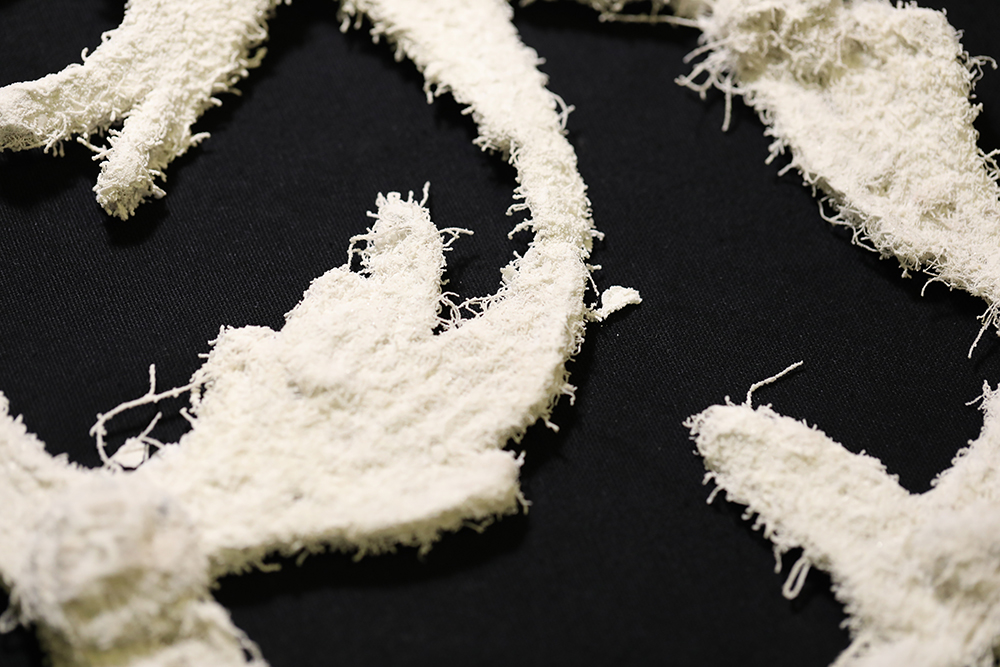
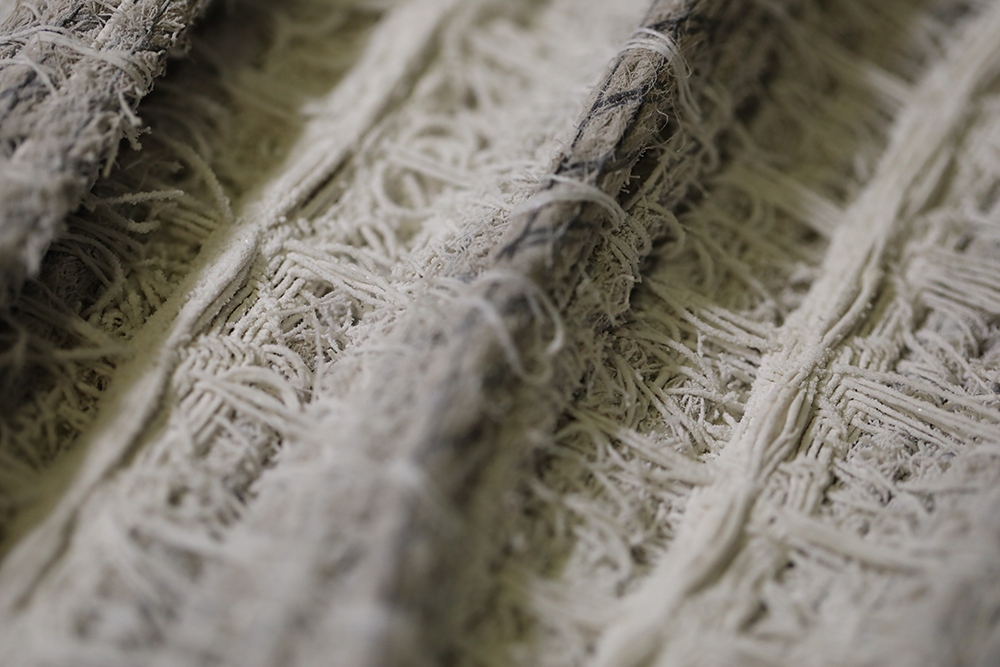
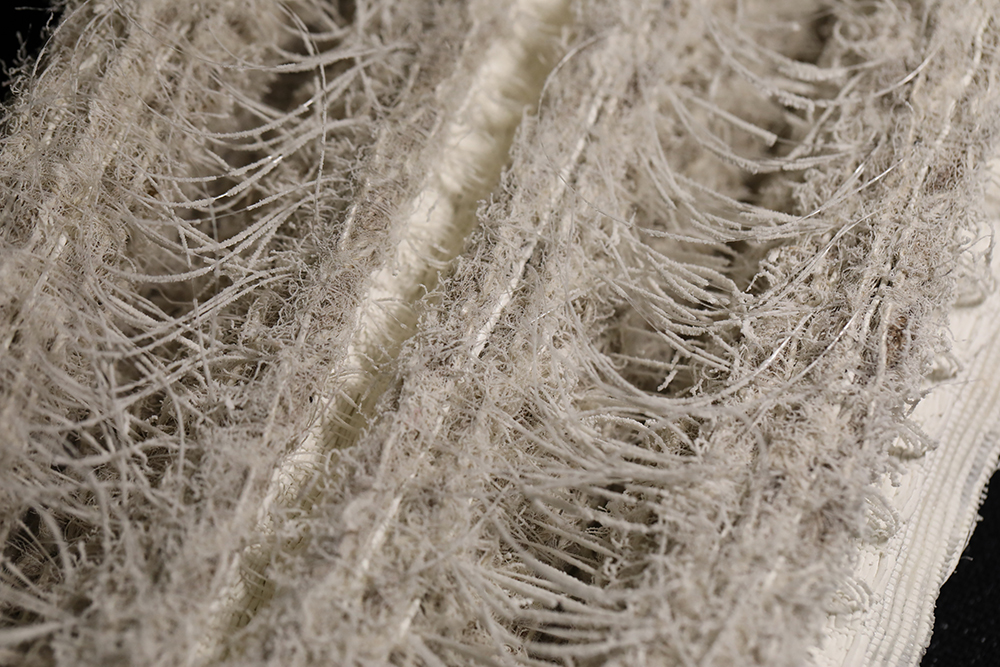
A series of jute-based samples have been shaped according to various textile techniques including weaving, crocheting, stitching before being exposed to the biocalcification process. This treatment was developed over 3 days, consisting first into the soaking of the textiles with calcite-secreting bacteria and secondly another bath with the complementary compound to induce the calcification. Through this process, the samples are not only hardened but also acquire a white finishing recalling stalagmite textures. From these hands-on experimentation a series of design proposals were developed, suggesting a variety of design-led applications and perspectives such as: bioreceptive domestic structures, urban furniture, crocheted vernacular architectures, stitched architectural ornaments and modular mashrabiya.
Students: Juliette Clapson, Mélanie Dhubert Riollet, Nina Dos Santos, Jeanne Guillet, Maude Guirault, Violette Husson, Victor Manceau, Arnaud Mazel, Chloé Ménard, Oscar Nahan.
Coordination & facilitation: Aurélie Mosse
Teaching team: Bastian Beyer, Daniel Suarez, Aurélie Mosse
Scientific partners Annette Esnault-Filet, Leslie Sapin from Soletanche-Bachy
Funding The course benefited of the respective support of I-Portunus Houses pilot scheme*, Soletanche Bachy, Ecole des Arts Décoratifs and the Matters of Activity cluster, Humboldt University (10k€).
Related publications
- Mosse, A., Zamora, D.S., Beyer, B., 2024, ‘Towards a Bacterially-Induced Textile Architecture’, In: Thomsen, M.R., Ratti, C., Tamke, M. (eds) Design for Rethinking Resources. UIA 2023. Sustainable Development Goals Series, pp.47-63, Springer, Cham.
- Granja, C., 2023, Design textile: des bactéries sans un pli, Libération, Nous! Le vivant: éclairage, 22 septembre 2023.
- MoA, 2022, Materials of the future, April 2022.
- I-Portunus, 2022, Ecole des Arts Décoratifs, stories.
* I-Portunus Houses pilot scheme is implemented, on behalf of the European Commission, by a consortium of organisations that have been pioneers of European cultural mobility programmes themselves. Coordinated by the European Cultural Foundation (Amsterdam), the i-Portunus Houses consortium involves MitOst (Berlin) as main mobility implementer and the Kultura Nova Foundation (Zagreb) as lead in evaluation and analysis.
a 6-week project in collaboration with CITA, Royal Danish Academy, in the framework of the 2021 « matérialités futures » course, 4DTM, Ecole des Arts Décos
Building on the Imprimer la lumière research project, this course asks how architects and designers can work with bioluminescent micro-organism to develop biosourced materials informed by 3D printing for an architectural context. Bioluminescence is a chemical form of light produced by many marine organisms, some insects and mushrooms. While bioluminescent genes are used as markers in biology and medicine, recent experiments in the biodesign community have explored bioluminescence as an alternative to public and domestic lighting or as prospective garment finishing. By learning how to grow luminescent bacteria and investigating how they can be appropriated through 3D soft structures, primarily 3D printed, students questioned and explored both conceptually and materially how bioluminescent bacteria can be part of a strategy for a living architecture underpinned by 3D printing.
Students: Laura Bartier, Ines Bel Mokhtar, Maty Biayenda, Coraline Chancibot, Lisa Grand, Chloé Hercé, Alyssa Jos, Minji Koo, Julie Lagarde, Alexandra Lenartowicz, Eléonore Pierrard, April Saint-James
Coordination: Aurélie Mosse
Teaching team: Tony Jouanneau, Aurélie Mosse, Mette Ramsgaard Thomsen, Martin Tamke, Guro Tyse
Support: EUR ArTeC, Olivier Bienz, CITA
Related publication:
- Ramsgaard Thomsen, M., Tamke, M., Mosse, A., Sieder-Semlitsch, J., Bradshaw, H., Fabritius Buchwald, E., Mosshammer, M., 2022, ‘Imprimer la lumière: 3D printing bioluminescence for architectural materiality’, In: Yuan P.F., Chai H., Yan C., Leach N. (eds) Proceedings of the 2021 DigitalFUTURES. CDRF 2021. Springer, Singapore.
examines the making of a bio-luminescent micro architecture. The project is an interdisciplinary research enquiry sitting at the intersection of architecture, design and microbiology exploring the use of light-emitting bacteria as architectural materiality. The project is a collaboration between Soft Matters, Ensadlab, ENSAD and CITA .
By investigating the 3D printing of bioluminescent bacteria, we are questioning how architecture can be host for an ecology of species in symbiotic coexistence.
The project investigates the critical thinking and appropriation of living bacteria as an architectural materiality. To do so, we explore bioluminescence: a chemical form of light produced by many marine organisms, some insects and mushrooms. In ‘Imprimer la lumière’ we use bioluminescent bacteria to examine the metabolism of a living architecture.
The project is conceived over a series of experiments appropriating techniques for growing luminescent bacteria and developing the technologies for 3D printing the extrusion of their medium. 3D printing is explored as a means of liberating the forming processes of the medium to investigate how topology and surface treatment can drive the life cycles and therefore the light performance of the bacteria. In Imprimer la lumière, we use a collaborative robot with a bespoke micro dispenser. This allows us to address an architectural scale of fabrication distinct from dedicated bioprinter that operate at smaller scales. The building of new 3D printing methods for collaborative robots also allows us to interface with programmable design environments, allowing a higher degree of control and steering of both the design and the environment for the organisms.
Imprimer la lumière sits at the intersection of biodesign and digital fabrication. It opens up new perspectives for the design and appropriation of bioluminescence as an architectural materiality. At a conceptual level, the project asks what happens when the material of architecture becomes living: what are the new concepts, methods and technologies that are needed to design for and with living materials?
Main researchers: Aurélie Mosse, Mette Ramsgaard Thomsen, Martin Tamke
Funding: IFD sciences program of Institut Français du Danemark, Danish Arts Foundation, ArTeC.
Related teaching project: Crafting 3D bioluminescence
Related publications:
- Ramsgaard Thomsen, M., Tamke, M., ,Tyse, G., Mosse, A. , 2023, Imprimer la lumière: bacterial luminescence as a 3D-printed spiral micro-architecture, .able journal .
- Ramsgaard Thomsen, M., Tamke, M., Mosse, A., & Tyse, G, 2021. Designed Substrates For Living Architecture Performance – Imprimer La Lumière. In A. Tadeu & J. de Brito (Eds.), Proceedings of CEES 2021 – Construction, Energy Environment & Sustainability. Itecons, University of Coimbra, Portugal.
- Ramsgaard Thomsen, M., Tamke, M., Mosse, A., Sieder-Semlitsch, J., Bradshaw, H., Fabritius Buchwald, E., Mosshammer, M., 2022. ‘Imprimer la lumière: 3D printing bioluminescence for architectural materiality’, In: Yuan P.F., Chai H., Yan C., Leach N. (eds) Proceedings of the 2021 DigitalFUTURES. CDRF 2021. Springer, Singapore.
- Mosse, A., 2020. ‘Décors textiles: du déchet à la Biogée’, Revue Décor, Paris: Ensad, 4th of December 2020.
